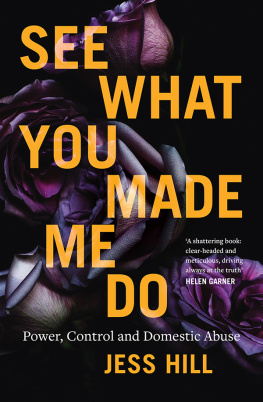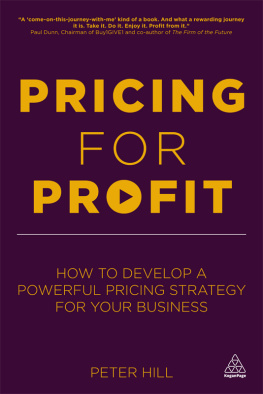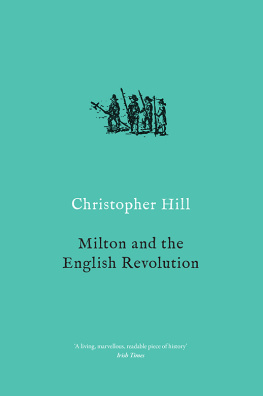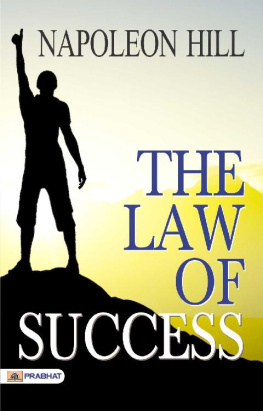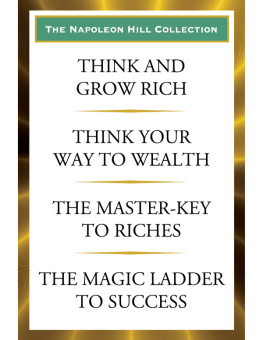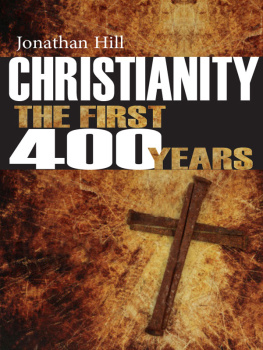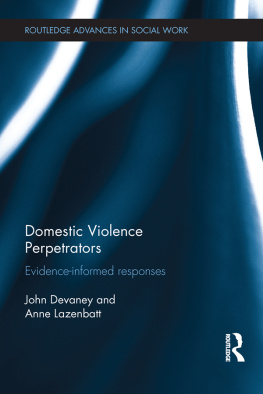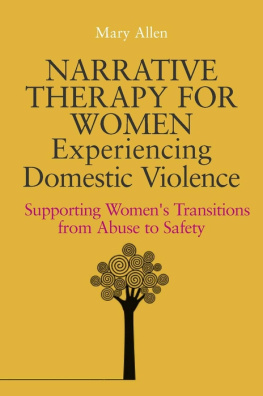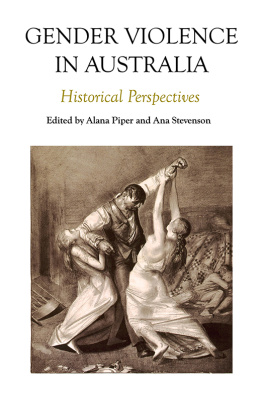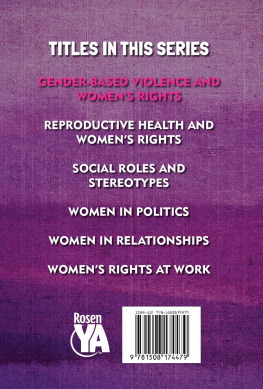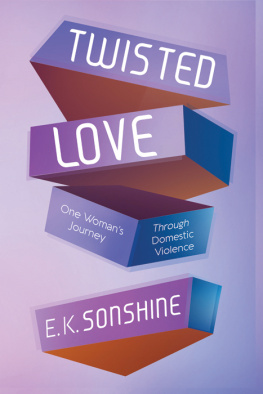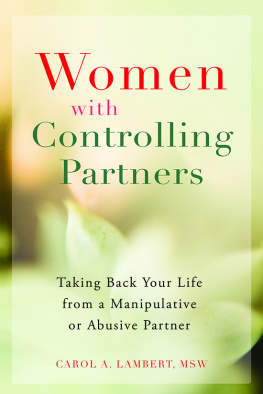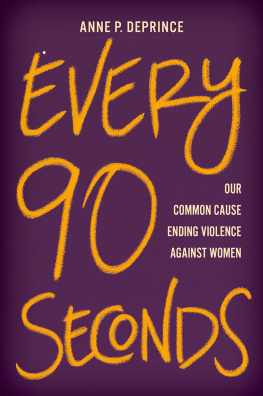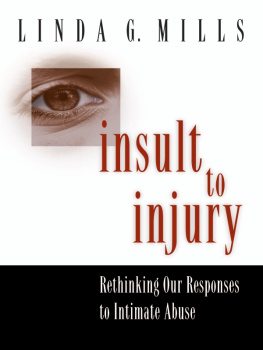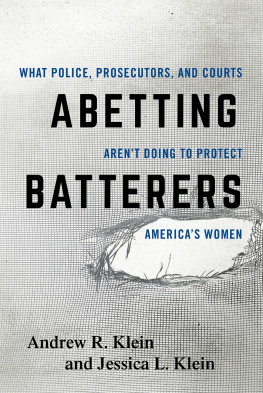Published by Black Inc.,
an imprint of Schwartz Publishing Pty Ltd
Level 1, 221 Drummond Street
Carlton VIC 3053, Australia
www.blackincbooks.com
Copyright Jess Hill 2019
Jess Hill asserts her right to be known as the author of this work.
ALL RIGHTS RESERVED.
No part of this publication may be reproduced, stored in a retrieval system, or transmitted in any form by any means electronic, mechanical, photocopying, recording or otherwise without the prior consent of the publishers.
9781760641405 (paperback)
9781743820865 (ebook)
Cover design by Sandy Cull, www.sandycull.com
Text design and typesetting by Marilyn de Castro and Akiko Chan
Cover image: Decaying Flower Billy Kidd
Author photo: Connie Agius
NOTES ON MY METHODS
In this book, wherever possible, I have replaced the term domestic violence with domestic abuse. I did this because in some of the worst abusive relationships, physical violence is rare, minor or barely present. As Yasmin Khan from Eidfest Community Services writes in an article for Womens Agenda, Many women that we support assure me there has been no domestic violence hes never laid a hand on me but on deeper questioning and reflection, realise they have been abused for many years, in ways that have been more subtle but [are] just as damaging and potent. Khan has made it her mission to replace domestic violence with domestic abuse, as police have done in the UK. Lets change the language, she writes, and stop sending a message that its only a serious issue when there has been physical violence. When I read Khans article, it stopped me in my tracks. I knew immediately: we need to make this change. The entire book was re-edited to reflect it, where appropriate, and the subtitle was changed on the cover. As my wonderful editor Kirstie Innes-Will assured me, the gain is worth the effort.
There is a distinct power imbalance built into the journalistsource relationship: the journalist usually has ultimate power over what gets published. For the survivors featured in this book, I wanted to flip that and give the power back to them. If this process was not a positive experience for them, there was no point in doing it. Every survivor I interviewed was reassured that this was their story, not mine. This meant giving them the chance, wherever possible, to review their story, suggest revisions or ask for things to be deleted especially if there were safety concerns. The process was sometimes laborious, but always worthwhile. It has been an honour to work with every one of them.
Where necessary, I have also omitted the cultural backgrounds of several people in this book. I did so either for the victims protection, or because I have identified them as parties to a family law case (and its illegal under Section 121 of the Family Law Act to publish anything that might identify a party to the proceedings).
The stories in the chapter on family law are those of adult and child survivors/victims. It was considered unsafe to contact the alleged abusers in each case. I did, however, look carefully at their affidavits, and strove to be as fair as possible.
Some of the ideas in this book are heavily contested, as I have made clear throughout. Although Ive been fortunate enough to have some of the best minds review many of the following chapters, the responsibility for errors and inaccuracies is entirely mine. If you notice something of concern, please contact Black Inc., and we will do our best to correct future editions.
INTRODUCTION
At the office of Safe Steps, Victorias 24/7 family violence helpline, the phones have gone quiet. I get nervous when they stop ringing, says one worker. Its a rare occurrence. At its busiest, Safe Steps receives a call every three minutes. Many women are repeat callers: on average, they will return to an abusive partner seven times before leaving for good.
You must get so frustrated when you think a womans ready to leave and then she decides to go back, I say.
No, replies one phone counsellor pointedly. Im frustrated that even though he promised to stop, he chose to abuse her again.
*
A year into my reporting on domestic abuse, I had a terrible realisation. It was 2015, and I was hanging clothes out to dry on a stunning summer night alive with the screeching of fruit bats. The air was cool on my skin. I felt content, peaceful; safe. As I walked towards our back steps, washing basket in hand, a cascade of thoughts swept through me with such force it made my eyes sting. To feel safe in the dark even in my own backyard was a privilege. How many women would never feel safe in their backyard? How many would be approaching their back steps with a sense of dread? How many would be steeling themselves for what might happen to them in bed that night? How many would feel their breath quicken at every rustle of leaves, terrified that somewhere in the dark, the man they once loved was waiting for them?
We talk a lot about the danger of dark alleys, but the truth is that in every country around the world the home is the most dangerous place for a woman. Of the 87,000 women killed globally in 2017, more than a third (30,000) were killed by an intimate partner, and another 20,000 by a family member. These statistics tell us something thats almost impossible to grapple with: its not the monster lurking in the dark women should fear, but the men they fall in love with.
*
This is a book about love, abuse and power. Its about a phenomenon that flourishes in private and in public, perpetrated mostly by men who evade scrutiny. Its about all the questions we dont ask, like: Why does he do it? Its about turning our stubborn beliefs and assumptions inside out and confronting one of the most complex and urgent issues of our time.
For the first time in history we have summoned the courage to confront domestic abuse. This has been a radical shift, and in years to come, 2014 will likely stand as the year the Western world finally started taking mens violence against women seriously. But nowhere did an entire population wake up to it like Australia did on February 12 that year.
On that day, Australians watched a solitary woman, raw with grief, look downwards and skywards and out across a clutch of reporters whod barely hoped for a statement. An ordinary woman standing in a middle-class Australian street talking about the public murder of her eleven-year-old son at the hands of his father. An ordinary woman who for eleven years had struggled to keep her son safe and protect the love he had for his father. After all, wasnt that what she was supposed to do? Bury her own fear and manage the risk, so her child could have a dad? No-one loved Luke more than Greg, his father. No-one loved him more than me, Rosie Batty insisted, defending the love of a father who had just beaten and stabbed her son to death. After surviving and leaving Gregs violence, she had warned for years that he was dangerous, unpredictable, and a risk to her son. In courts and police stations her warnings had been minimised, dismissed, believed, acted on and then lost in the system, just like those of countless victims before her. Now her predictions had come true. Not behind closed doors, where such horrors are usually carried out, but in front of children and parents on a public cricket ground. If anything comes out of this, I want it to be a lesson to everybody, said Rosie Batty on the street that day. Family violence happens to everybody, no matter how nice your house is, how intelligent you are. It happens to everyone and anyone.
In the eyes of mainstream Australia, Batty

